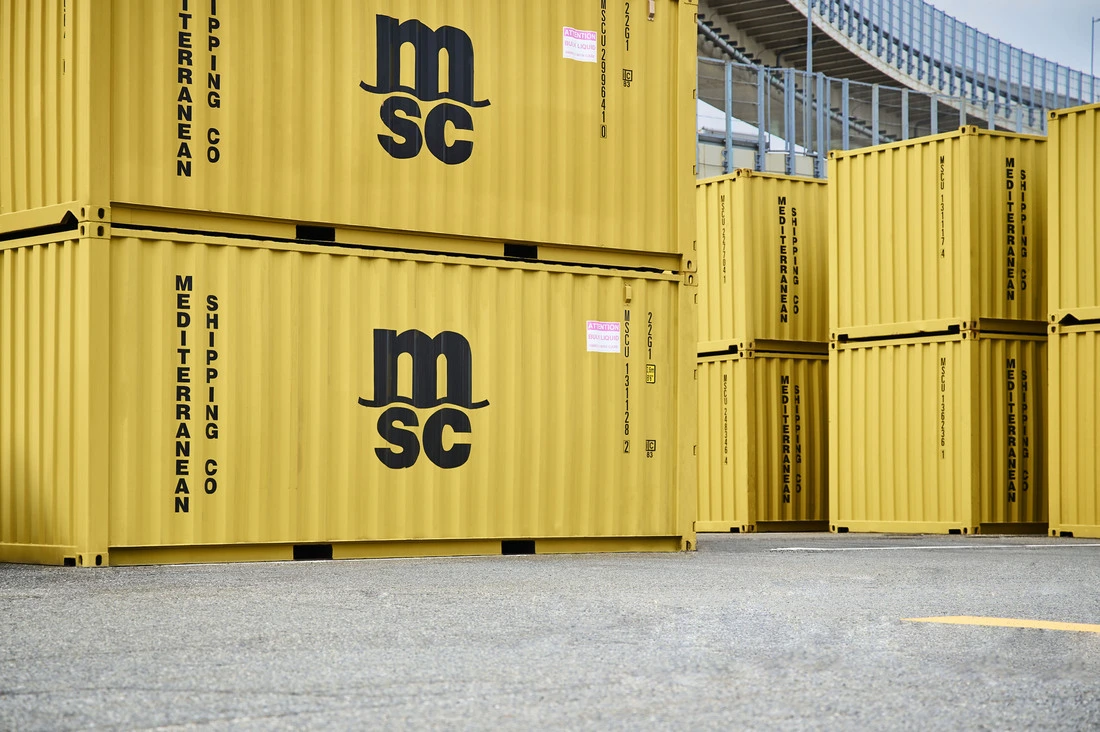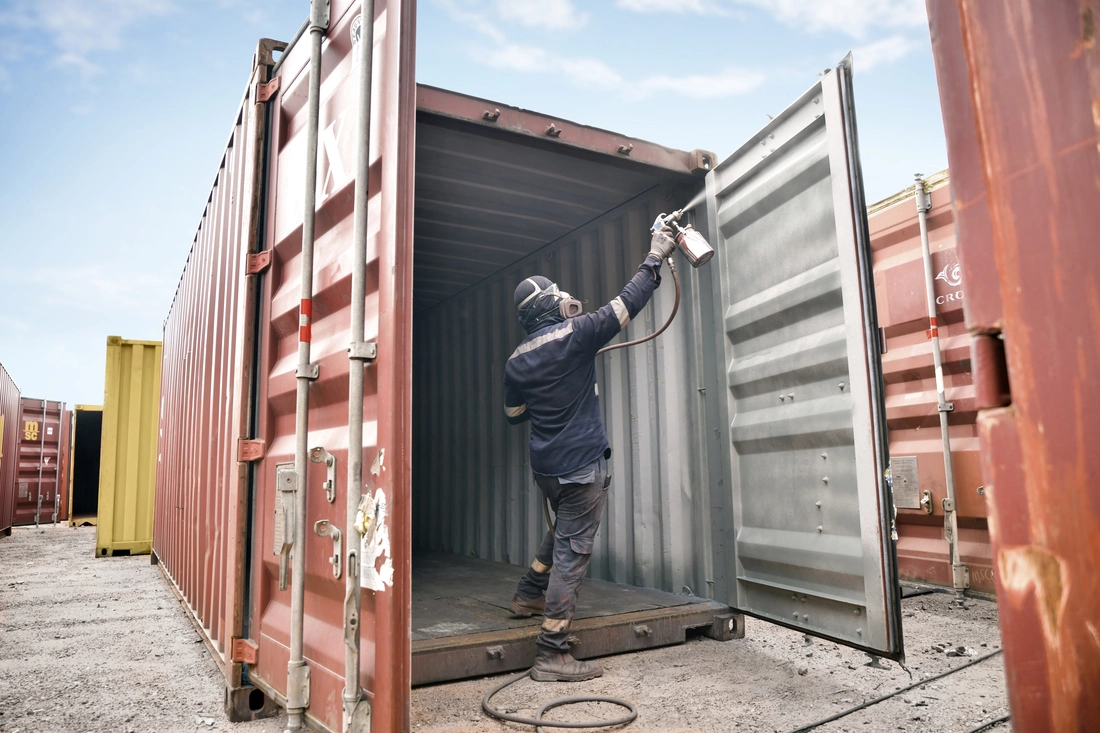Whether it’s as a pop-up restaurant, art studio, classroom, or commercial space, their durability and portability mean that shipping containers can be utilized creatively in everyday life. The innovative ways containers can be used may surprise you, as will the number of times you can spot secondhand containers in unexpected places during the day.
Search schedule and ship with the experts in shipping and logistics

Sustainability, Affordability, and Versatility: Why are Shipping Containers being Repurposed?
Reusing shipping containers for other projects can offer flexible solutions to problems that occur across numerous industries including construction, architecture, and disaster relief. The containers also have many qualities which make them perfect for adaptation, such as:
- Durability due to their ability to withstand harsh weather conditions
- Increased security because of their solid steel structure
- Ease of transport
- Flexible usage across a range of different spaces due to different sizes available
From a sustainability perspective, recycling second hand shipping containers helps reduce waste and contributes to a more sustainable use of materials.
Shipping containers can also be used as part of environmentally friendly construction projects, reducing the reliance on sourcing new construction materials like steel or wood, which can further reduce the environmental impact.
Similarly, using secondhand shipping containers can be more cost-effective. As they are already pre-built, this can reduce construction time and labour costs, making them ideal for construction projects where work needs to be completed quickly, or where the budget is more restricted.
Their overall design also makes shipping containers incredibly versatile, as they can be stacked together, or arranged in different designs depending on the specific project. Because of this, containers can be transformed into anything from retail spaces to emergency relief centres, or multi-level offices.
Innovative Ways to Alter Shipping Containers
Second hand shipping containers are incredibly easy to employ in different ways. Some of the innovative ways different businesses have found to adapt their shipping containers include:

- Structural modifications like cutting, stacking, and welding to create larger spaces or improve ventilation and lighting.
- Adding thermal insulation, heating systems, or air conditioning to regulate the temperature inside the containers
- Using interior walls to split the space and create different areas.
- Adding external power sources
- Replacing the floor or covering the plywood with materials such as laminate, hardwood, or tiles to improve insulation and make the container more aesthetically pleasing.
- Adding in plumbing and waste disposal systems
- Creating a pitched roof or rooftop garden for improved drainage and sustainability
- Fitting solar panels to make the container self-sufficient in energy
Designers and developers can combine these modifications to ensure that every used shipping container meets individual industry requirements.
From Cargo to Communities: Creative Shipping Container Uses
Worldwide, shipping containers are being repurposed in increasingly interesting ways. Their overall strength, combined with their diverse properties means that designers and architects can get incredibly creative when thinking about how best to incorporate second hand containers.
Housing
Commercial spaces
Farming
Disaster
Real – World Transformations of Used Shipping Containers
Although they are used worldwide, there are some standout examples of how second-hand shipping containers have been recycled.
Box Park
London’s Boxpark is a standout demonstration of how used shipping containers can take on a new lease of life. Located in Shoreditch, this pop-up retail and dining destination was originally designed to be a temporary shopping mall. However, the diversity in shops and eateries meant it quickly became a popular place with both tourists and locals and is now known as a hub for fashion and street food in the capital. By providing affordable spaces for new businesses, Boxpark has helped to revitalize Shoreditch and attract large crowds to the area regularly.
M-City Project
Blending urban art, architecture, and sustainability, the M-City Project in Gdynia, Poland has turned second hand shipping containers into a creative urban space. Launched by Mariusz Waras, M-City uses stacks of shipping containers to create spaces for numerous activities. These include art galleries, studios, and different public event spaces. M-City highlights how urban spaces can be creatively reimagined using shipping containers, while also promoting the importance of sustainability in architectural designs.
After retiring from a career in global cargo transportation, more and more frequently we see used shipping containers being repurposed and taking on a new lease of life.
Whether it’s as a pop-up restaurant, art studio, classroom, or commercial space, their durability and portability mean that shipping containers can be utilized creatively in everyday life. The innovative ways containers can be used may surprise you, as will the number of times you can spot secondhand containers in unexpected places during the day.
Search schedule and ship with the experts in shipping and logistics

Sustainability, Affordability, and Versatility: Why are Shipping Containers being Repurposed?
Reusing shipping containers for other projects can offer flexible solutions to problems that occur across numerous industries including construction, architecture, and disaster relief. The containers also have many qualities which make them perfect for adaptation, such as:
- Durability due to their ability to withstand harsh weather conditions
- Increased security because of their solid steel structure
- Ease of transport
- Flexible usage across a range of different spaces due to different sizes available
From a sustainability perspective, recycling second hand shipping containers helps reduce waste and contributes to a more sustainable use of materials.
Shipping containers can also be used as part of environmentally friendly construction projects, reducing the reliance on sourcing new construction materials like steel or wood, which can further reduce the environmental impact.
Similarly, using secondhand shipping containers can be more cost-effective. As they are already pre-built, this can reduce construction time and labour costs, making them ideal for construction projects where work needs to be completed quickly, or where the budget is more restricted.
Their overall design also makes shipping containers incredibly versatile, as they can be stacked together, or arranged in different designs depending on the specific project. Because of this, containers can be transformed into anything from retail spaces to emergency relief centres, or multi-level offices.
Innovative Ways to Alter Shipping Containers
Second hand shipping containers are incredibly easy to employ in different ways. Some of the innovative ways different businesses have found to adapt their shipping containers include:

- Structural modifications like cutting, stacking, and welding to create larger spaces or improve ventilation and lighting.
- Adding thermal insulation, heating systems, or air conditioning to regulate the temperature inside the containers
- Using interior walls to split the space and create different areas.
- Adding external power sources
- Replacing the floor or covering the plywood with materials such as laminate, hardwood, or tiles to improve insulation and make the container more aesthetically pleasing.
- Adding in plumbing and waste disposal systems
- Creating a pitched roof or rooftop garden for improved drainage and sustainability
- Fitting solar panels to make the container self-sufficient in energy
Designers and developers can combine these modifications to ensure that every used shipping container meets individual industry requirements.
From Cargo to Communities: Creative Shipping Container Uses
Worldwide, shipping containers are being repurposed in increasingly interesting ways. Their overall strength, combined with their diverse properties means that designers and architects can get incredibly creative when thinking about how best to incorporate second hand containers.
Housing
Commercial spaces
Farming
Disaster
Real – World Transformations of Used Shipping Containers
Although they are used worldwide, there are some standout examples of how second-hand shipping containers have been recycled.
Box Park
London’s Boxpark is a standout demonstration of how used shipping containers can take on a new lease of life. Located in Shoreditch, this pop-up retail and dining destination was originally designed to be a temporary shopping mall. However, the diversity in shops and eateries meant it quickly became a popular place with both tourists and locals and is now known as a hub for fashion and street food in the capital. By providing affordable spaces for new businesses, Boxpark has helped to revitalize Shoreditch and attract large crowds to the area regularly.
M-City Project
Blending urban art, architecture, and sustainability, the M-City Project in Gdynia, Poland has turned second hand shipping containers into a creative urban space. Launched by Mariusz Waras, M-City uses stacks of shipping containers to create spaces for numerous activities. These include art galleries, studios, and different public event spaces. M-City highlights how urban spaces can be creatively reimagined using shipping containers, while also promoting the importance of sustainability in architectural designs.